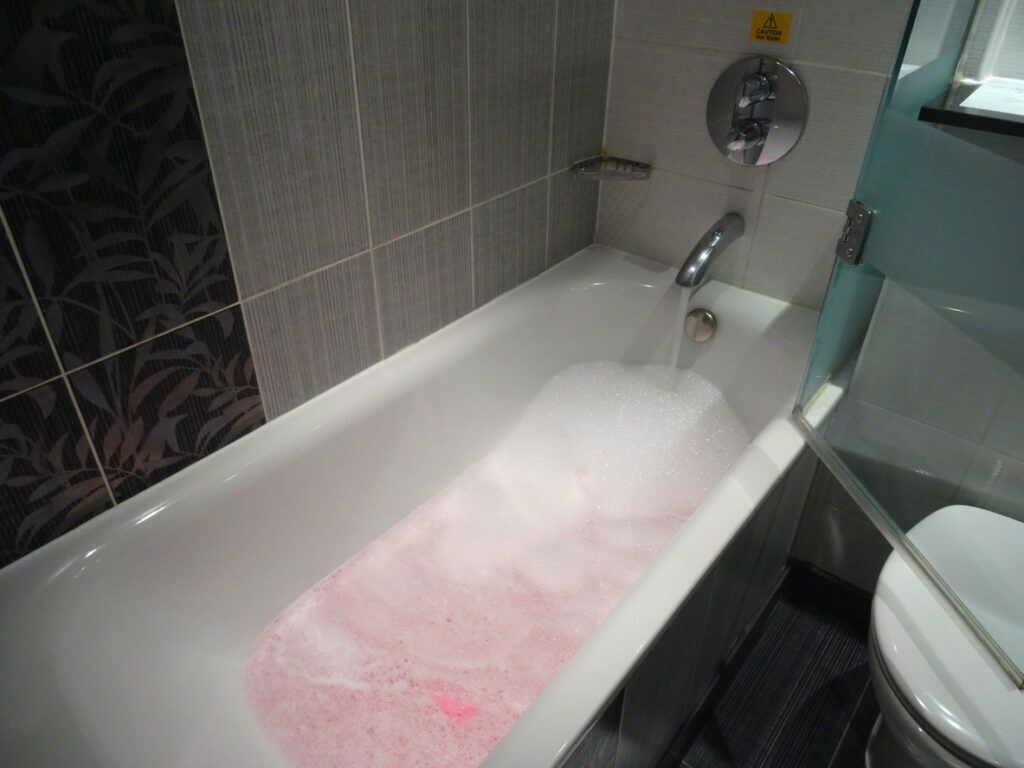Just about everyone maintains their personal thinking involving What To Do If Sewage Starts Backing Up Into the Shower.

Sewer back-up in the bathtub can be a traumatic and unsanitary problem for any house owner. Not just is it bothersome, yet it also postures serious health and wellness threats and suggests underlying concerns with the plumbing system. Understanding why sewage is turning up through the tub is important for taking proper action to resolve the problem properly.
Intro to the Concern
Recognizing the Issue
When sewage draws back up into the bath tub, it's a clear indicator of a trouble with the drain system. The wastewater that must be streaming far from your home is rather finding its way back right into your living space, which can cause considerable damage and carcinogen.
Possible Reasons
A number of aspects can contribute to sewer back-up in the tub. From obstructions in the drain line to issues with the plumbing facilities, determining the origin is vital for finding a service.
Usual Factors for Sewage Backup
Blockages in the Drain Line
Among the most typical reasons for sewer backup is a clog in the sewer line. This can occur as a result of the accumulation of debris, grease, or international objects in the pipes, preventing proper flow and causing sewer to back up right into your bath tub.
Tree Origin Breach
Tree origins seeking dampness and nutrients can penetrate drain lines via tiny fractures or joints. Over time, these roots can grow and increase, creating significant damage to the pipes and causing sewer back-up concerns.
Aging Facilities
Older homes might have dated plumbing systems that are extra vulnerable to corrosion, splits, and wear and tear. As pipes age, they end up being much more prone to leakages and clogs, enhancing the possibility of sewer backup cases.
Heavy Rainfall or Flooding
Throughout periods of heavy rainfall or flooding, the sewer system might end up being overwhelmed with excess water, triggering back-ups and overflows. This can result in sewage backing up into tubs and various other fixtures inside the home.
Health Threats Associated with Sewer Back-up
Contamination of Water System
Sewer backup can pollute the water in your house, posturing a major health risk to you and your family. Direct exposure to polluted water can bring about stomach problems, skin infections, and various other health problems.
Spread of Condition
Sewer has damaging bacteria, viruses, and parasites that can create a series of illness, including liver disease, cholera, and gastroenteritis. Entering contact with sewer or polluted surfaces puts you at risk of infection.
Mold Growth
Dampness from sewer backup can produce excellent problems for mold and mildew growth in your home. Mold spores can intensify breathing problems and create allergies in delicate individuals, making timely cleaning important.
Signs of Sewage Back-up
Foul Odors
Unpleasant odors rising from drains pipes or fixtures, especially in the bathroom, might show sewage backup issues. These smells are frequently solid and consistent, signifying a problem that needs immediate interest.
Slow Draining Fixtures
Bathtubs, sinks, and commodes that drain slowly or not whatsoever could be experiencing sewage backup. If numerous fixtures are affected simultaneously, it's likely that the concern originates from an usual factor, such as the primary sewer line.
Gurgling Noises
Unusual gurgling or bubbling sounds coming from drains pipes when water is running somewhere else in the house are a measure of air caught in the plumbing system. This air build-up can result from sewer back-up and must be investigated promptly.
Immediate Actions to Take
Turning Off Supply Of Water
In the event of sewage back-up, it's necessary to turn off the water to prevent further contamination and damages. Find the major water shutoff valve in your house and shut it off up until the issue can be dealt with.
Getting In Touch With a Specialist Plumber
Managing sewage back-up is not a do it yourself task. Get in touch with a licensed plumber with experience in handling sewage-related problems to evaluate the scenario and perform necessary repair work or cleanings.
Preventing Contact with Infected Water
Up until the sewer back-up is fixed, avoid contact with polluted water to avoid the spread of microorganisms and pathogens. Put on safety gear if you need to be in the damaged location and wash your hands extensively later.
Preventive Measures
Regular Upkeep of Drain Lines
Schedule regular evaluations and upkeep of your sewer lines to recognize and attend to prospective issues prior to they rise into significant issues. This can consist of cleaning debris, evaluating for tree origin invasion, and repairing any type of broken pipes.
Setting Up Backwater Shutoffs
Take into consideration mounting backwater shutoffs in your plumbing system to stop sewage from receding into your home throughout periods of heavy rainfall or flooding. These shutoffs instantly close when water draws back up, shielding your building from contamination.
Proper Disposal of House Waste
Prevent flushing anything apart from bathroom tissue and human waste down the bathroom to stop obstructions and clogs in the sewage system line. Dispose of grease, oil, and other family chemicals appropriately to decrease the risk of plumbing problems.
Tidying up After Sewer Backup
Sanitation Procedures
Extensively disinfect and disinfect impacted locations after sewage backup to eliminate unsafe microorganisms and prevent mold and mildew development. Usage ideal cleansing products and protective equipment to make certain risk-free and reliable cleaning.
Reconstruction of Affected Areas
Fix any type of damages to flooring, walls, or fixtures brought on by sewage back-up. Depending on the level of the damages, you might need to change carpets, drywall, or various other products to recover your home to its pre-loss problem.
Why Is Water Backing Up in My Bathtub When I Flush My Toilet?
What to do about a sewer line clog
First, don’t bother with plunging. No amount of plunging will dislodge the clog in a sewer line. The clog is too far away. Plungers are for clogs in the toilet itself, not the sewer line. Plus, the most likely causes of a sewer clog are:
Tree roots Flushed toys or feminine products Grease buildup Those items don’t move easily. And in the case of tree roots, the roots need to be cut out of the pipe and the pipe will need to be repaired.
You’ll need a closet auger. A closet auger is a type of plumber’s snake with a protective cover to keep from scratching the delicate porcelain toilet. If the clog is further down, you may need to remove the toilet or use one of your cleanouts to get to the clog.
We also recommend doing a video inspection of the drain to ensure that the cause of the clog has been completely removed. Otherwise, you could have the same problem again in a few days or weeks.
https://mspplumbingheatingair.com/blog/why-is-water-backing-up-in-my-bathtub-when-i-flush-my-toilet

I came across that blog entry on Why is There Sewage Coming Up Through the Bathtub while looking around the search engines. Sharing is good. You won't know, you may be helping someone out. We cherish your readership.
Rates